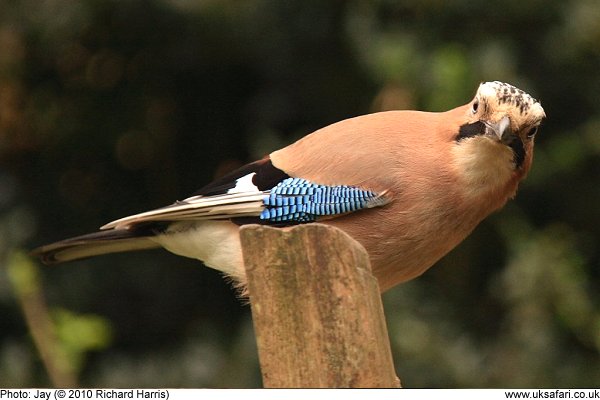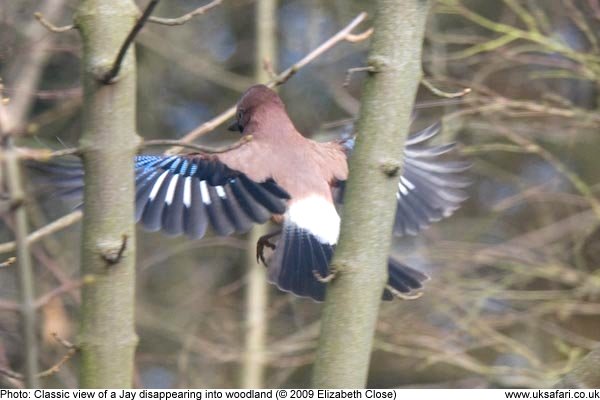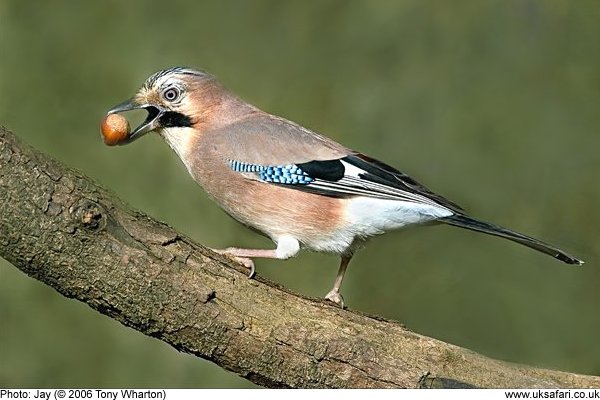 Jays
Jays
News > Jays >

Despite being the most colourful member of the crow family, Jays can be surprisingly elusive. The typical view most people get is a flash of their colourful plumage as they disappear off into the trees.

Autumn is the best time of year to look for them. If you want to go Jay spotting then head off to your local woodland and scan the ground at the base of the oak trees. Look for the bright white rump feathers which, from a distance, is their most noticeable feature. You'll often see them rummaging about in the leaf litter looking for acorns.
They cram the acorns into their throat pouches and then fly off to stash them in a safe place. Quite often, they bury them in the ground and then return to them in the winter when food is harder to find. But of course not every acorn is recovered. Some germinate and become a new generation of oak trees, providing food for future generations of Jays. Could this be an accident, or do the Jays have a long-term management plan in place for our woodlands?

In years when there is a poor crop of acorns you'll see more Jays in gardens. Also in winter there are Jays visiting the UK from the continent. You can attract them to your garden with peanuts, but it's worth bearing in mind they're able to cram a few dozen nuts in their throat in one visit, so you might need to refill your feeders more frequently.
More info at: UK Safari Jay Fact File

 Popular Pages
Popular Pages
Amphibians, Bats, Badgers, Beetles, Birds, Birds of Prey, Bumble Bees, Butterflies, Caterpillars, Creepy-Crawlies, Deadly Spiders, Dolphins, Dragonflies, E-Postcards, False Widow Spiders, Free Newsletter, Frogs, Fungi, Garden Spiders, Glow-Worms, Grey Squirrels, Hedgehogs, House Spiders, Ladybirds, Mammals, Marine Mammals, Moths, Owls, Reptiles, Spiders, Toads, Trees, Wildlife Hospitals
© Copyright 2017 G. Bradley - UK Safari | About Us | Links | Contributors



 Related Pages
Related Pages
